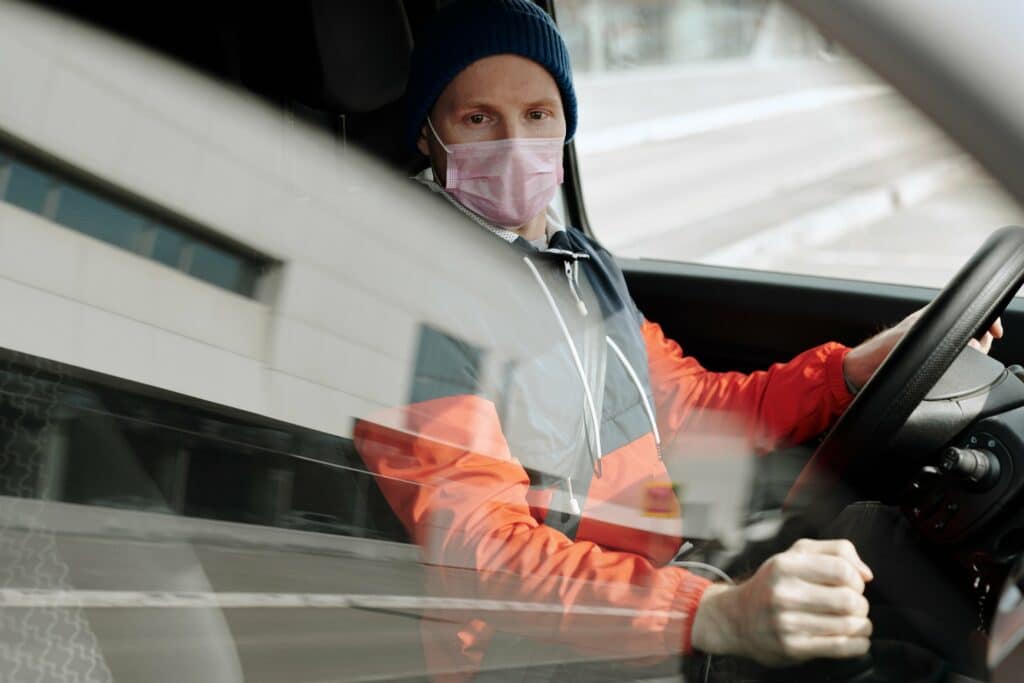How COVID Lockdowns Affected Driving Behavior
Many businesses have experienced financial strain throughout 2020 as they struggled to stay afloat during the COVID-19 lockdown. Industries that weathered the storm well, despite making sweeping adjustments to rates, include the auto insurance industry.
Rebates and reduced rates benefited many policyholders in self-quarantined and, therefore, driving less. With the easing of lockdown restrictions, traffic levels have risen, but many employees continue to work from home. Does this mean rates will remain low or drop even further?
When the hard lockdown happened in March, roads became eerily quiet. With the drop in traffic, fewer car crashes occurred. Fewer people socializing and drinking also reduced drunk driving incidents. As a result, insurance claims dropped.
On the other hand, we experienced an unexpected surge in reckless driving. Empty roads were simply too tempting for speed freaks who couldn’t resist using them as personal race tracks. Speeding became a serious problem that saw traffic fatality rates skyrocket in many states.
How the Auto Insurance Industry Responded to the COVID Crisis
A study by Deloitte Center for Financial Services reported that lockdowns led to a year-over-year drop of 40.2% in miles driven in April and a 25.5% drop in May.
With fewer miles driven, the auto insurance industry responded by reducing premiums for those working from home, issuing refunds, and granting payment relief to people who suffered pay cuts and job losses.
You may think all this generosity resulted in lower profits for auto insurance companies. Quite the contrary. The drop in traffic levels led to a huge decrease in insurance claims. Despite dishing out over $10 billion to policyholders, insurance companies still profited because they paid out fewer claims. In fact, Deloitte noted that in Quarter 2, the industry actually had better results than before COVID.
Will You Benefit from Lower Auto Insurance Rates Going Forward?
Now in its third wave of coronavirus cases, America continues to struggle to get COVID under control. How we live and work will have to change, at least for now. More people may stay home for fear of becoming infected and more companies may adopt remote working practices.
For such possibilities, we may see fewer vehicles on the roads in the foreseeable future. Will this mean car owners will continue to enjoy lower insurance rates?
Insurance companies usually attempt to estimate rates one to two years in advance, taking into account a wide range of factors and historical data. No one could have anticipated COVID two years ago. Now, insurance companies are adjusting rates in light of the ongoing pandemic — which experts predict will be around for at least another year or possibly even two.
A number of factors will influence rates going forward:
-
Fewer cars on the road as more people work from home OR more cars on the road as people choose to drive rather than expose themselves to the virus on public transportation. Insurance companies may rely more heavily on vehicle telematics to track their clients’ miles driven and adjust the clients’ rates accordingly.
-
If the economy’s downturn and high unemployment levels persist, it may affect new vehicle sales. This, in turn, will result in a decrease in new insurance policies being sold. By the second quarter, Deloitte forecasted a 6.2% decline in personal auto insurance premiums written in 2020. On the bright side, TransUnion reports that auto insurance shopping rebounded in June, surpassing 2019 levels.
-
If bad driving behavior, like speeding, continues, car crashes will inevitably continue to increase. Even with less traffic on the roads, more reckless driving means the risk to insurers will remain high, as will insurance premiums.
Determining and setting policy premiums may seem like a delicate balancing act for an insurance company. Some insurers may err on the side of caution, but those who choose to lower their rates could gain the upper hand. Lower premiums may attract more customers, and the additional revenue from new business will result in higher profits.
How to Get Lower Premiums During and After the Pandemic
Auto insurance isn’t cheap. Since 2011, rates have jumped 29.6%, and in some states skyrocketed by as much as 86%. All but two states mandate car insurance for drivers. Even for drivers in those two states (Virginia and New Hampshire), we highly recommend against dropping your insurance policy to save money. Fortunately, for consumers, the highly competitive insurance market leads to ways to lower your premiums.
1. Inform your insurer of any change to your driving habits
If COVID has led to losing your job, working remotely, or working part-time, inform your insurer that you are traveling less.
Insurance companies take into account various factors when setting rates, such as marital status, age, profession, type of vehicle, credit rating, and driving history. Even before COVID hit, auto insurers were willing to adjust rates based on a change in your circumstances or driving frequency. So, it’s always a good idea to simply ask for a rerate.
2. Shop around for lower rates
When auto insurers started lowering premiums in April and May, some people switched to a carrier offering lower rates. For many, it was the first time they changed carriers.
Being with the same insurer for years doesn’t mean you get the best rates. You should shop around for better rates at least once a year. Doing so does not require as much time and effort as you may think. These days, you can easily compare insurance quotes online and find a better price.
3. Switch to a pay-as-you-drive plan
Usage-based insurance may become more popular if remote working becomes the norm. Also called “pay-as-you-drive” or “pay-per-mile” insurance, such policies require you to install a telematics device in your vehicle. Your insurance company will then be able to track how many miles you drive as well as your driving behavior like hard braking and sharp cornering. If you are driving less, switching to a mileage-based insurance plan can potentially save hundreds of dollars per year.
4. Practice safe driving
Car accidents and traffic violations push up your insurance rate. If you’ve picked up the bad habit of speeding during the lockdown, ease that foot off the gas. Driving behavior is one of the factors that influence rates, so always practice safe driving. Not only does it help keep premiums low but keeps you and everyone else safe on the roads.
No one knows for sure how COVID will affect auto insurance in the long term, but the industry has shown its flexibility in a time of crisis. You can use that flexibility to your benefit, especially if working from home has become your new normal.








